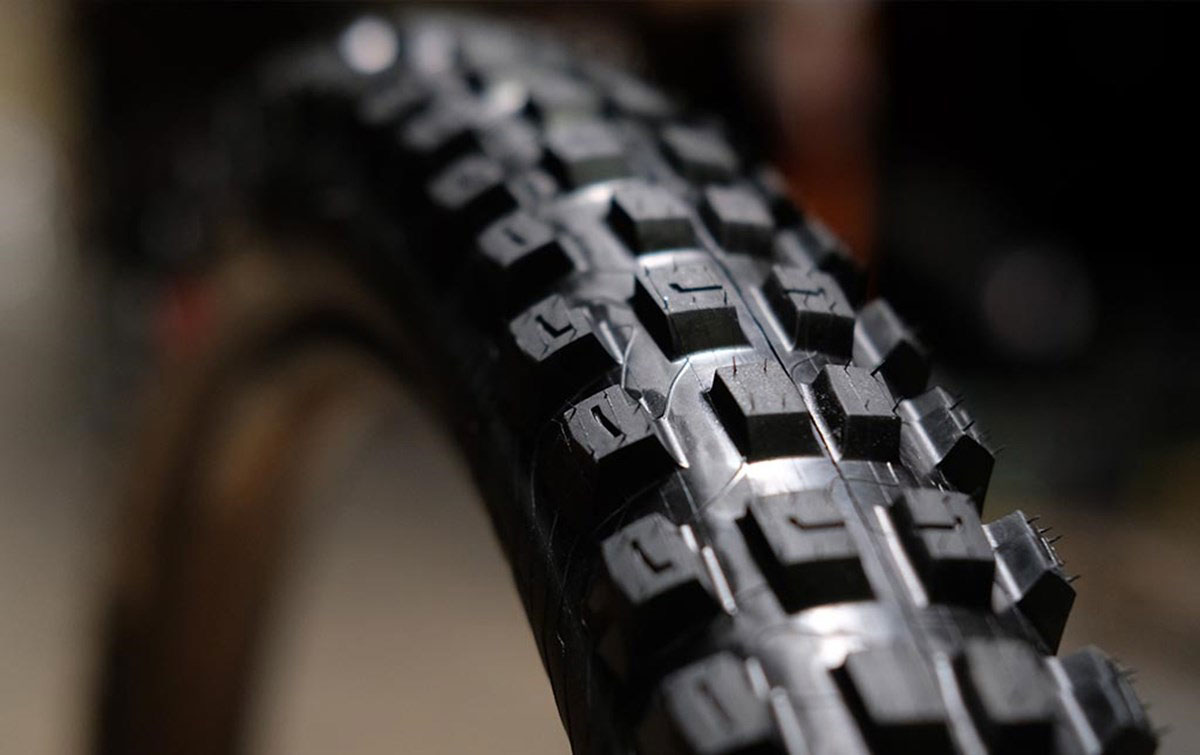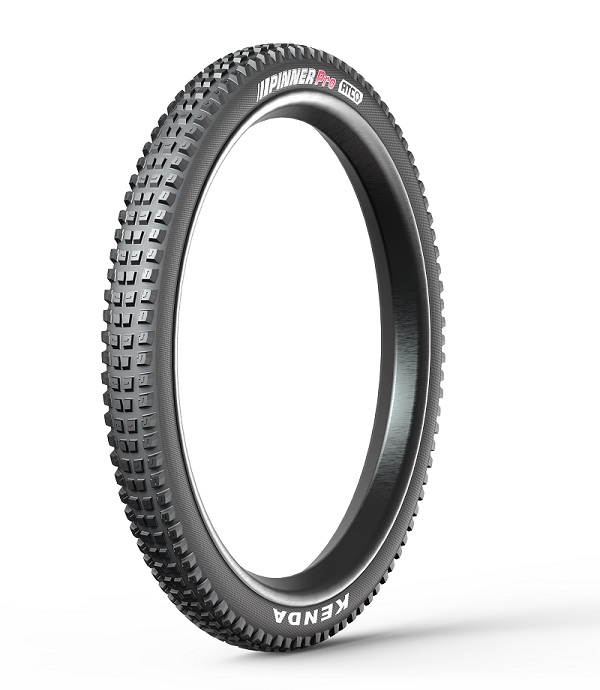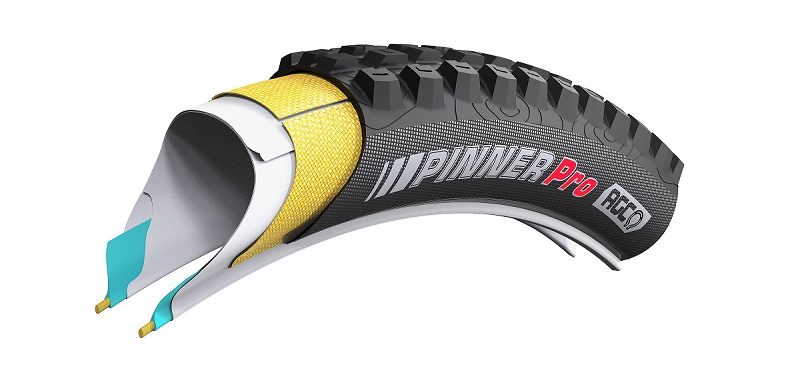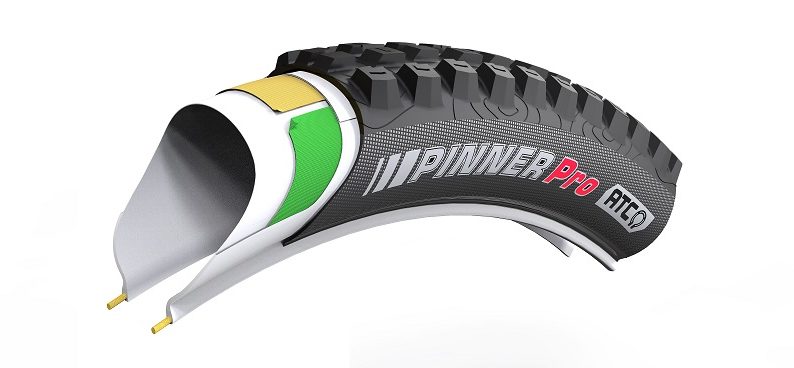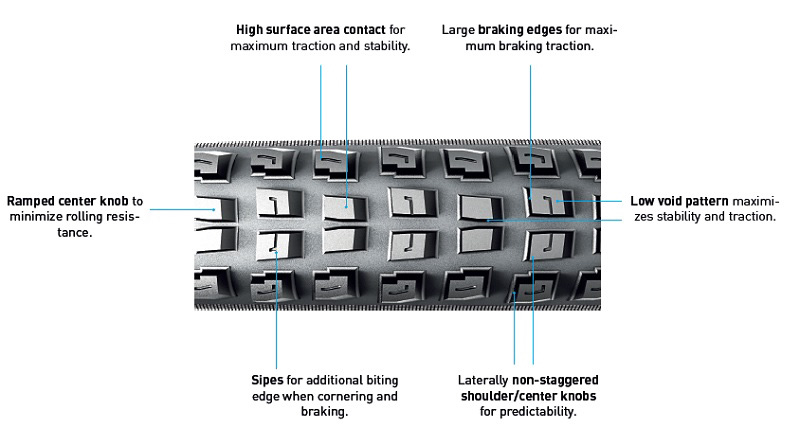After more than a year of testing and development, the new Kenda Pinner Pro mountain bike tire is here. Designed with input from Aaron Gwin, it’s made specifically for dry conditions ranging from hardpack flats and rock slabs to roots and rocks.
The goal? Maintain traction on these tricky surfaces while also delivering predictable cornering and braking. And give you two casing options, because non-Gwins don’t always need a DH-level of protection for trail riding. Here’s how they did it…
Kenda Pinner Pro casing & construction
The Pinner Pro will be initially available in two different casings – ATC and AGC. in Kenda’s parlance, the ATC is for ‘Trail’, and the AGC is for ‘Gravity’. Both models of the Pinner Pros feature a dual-compound design, but they’re layered differently.
The AGC’s take the “dual layer” approach, with a base layer and knob supports made from a firmer rubber, and a softer rubber laid over top to maximize traction. The ATC trail tires are a “dual tread” design, where the center tread is a firmer rubber and the side knobs are softer. Both AGC and ATC models are tubeless ready and use an Aramid woven fabric bead to save weight and allow you to fold the tires for storage/transportation.
The AGC is the most reinforced, downhill-rated version. The tire features Kenda’s Vector Shield (KVS) – A lightweight woven aramid material that reinforces the entire casing under the tread and inside the sidewalls. The KVS layer provides additional protection against cuts and punctures, helps stiffen up the sidewalls, and weighs much less than a 2-ply rubber construction. Kenda claims their KVS tires offer almost three times the cut resistance and 40% more puncture protection than comparable DH tires.
The Pinner Pro AGC also gets a 20mm Apex layer running along the tire bead, which further stiffens the sidewalls and reduces pinch-flatting or burping. Externally, the sidewalls of the AGC tires also have a thin gridded layer to resist abrasions.
The ATC tires offer a lighter overall construction: They still get the KVS reinforcement from sidewall to sidewall, but the layers are lighter in the trail tire versus the gravity model. The ATCs don’t get the Apex layer around the bead, or the extra grid pattern on the sidewall’s exterior.
Quick specs and claimed weights:
The Pinner Pro ATC and AGCs are available in 27.5” or 29” diameters 2.4” widths only. ATC tires are 120 TPI, while the AGC’s are 60 TPI. Claimed weights are:
- ATC 27.5” – 923g (+/- 46g)
- AGC 27.5″ – 1178g (+/- 59g)
- ATC 29er – 997g (+/-50g)
- AGC 29er – 1297g (+/-65g)
Tread Design:
Now let’s talk tread: The Pinner Pros were designed for optimal performance on hardpack, loose-over-hardpack, or rocky and rooty terrain. The tire’s low void pattern leaves plenty of surface area on top of the knobs, so there’s lots of rubber to find traction on hard surfaces.
Predictable cornering was a priority for the new Pinner Pros, thus the tread was designed to provide a consistent contact patch as you lean into corners. Kenda says Gwin directly influenced this design change during field testing; with his input they adjusted the side knobs into a non-staggered position so they’ll roll you smoothly into each side. They also made sure the side knobs were well supported with large outside drafts.
All the Pinner Pro’s center knobs are ramped, and Kenda claims they produce 16% less rolling resistance than their Hellkat AGC. To maximize bite in corners and under braking, the side knobs and every other row of center knobs are siped and the backsides of the knobs provide large, almost vertical braking edges.
All those words are great, but this video shows off the features and changes much better. The Pinner Pro AGC and ATC tires are available now through Kenda dealers. The ATC’s sell for $63 and the AGC’s retail for $65 (prices converted from euros). More sizes are expected in Fall 2020.
